Think: Is artificial selection a form of genetic modification? Why or why not?
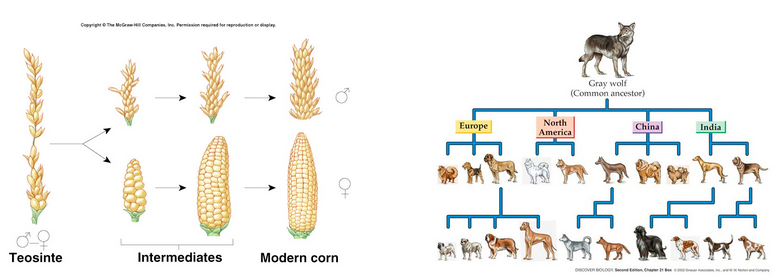
1. Growing GMO crops vs. Traditional Crops

A. A Few Issues and Solutions with Food Supply:
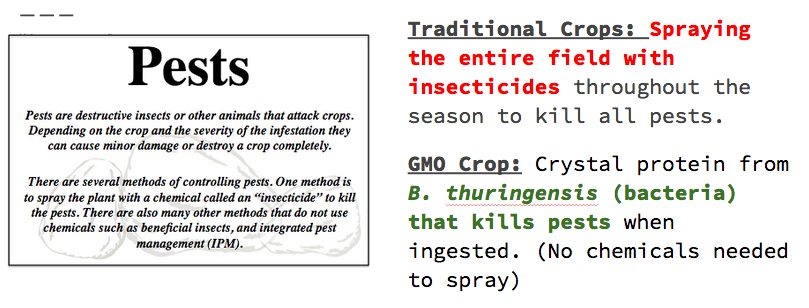
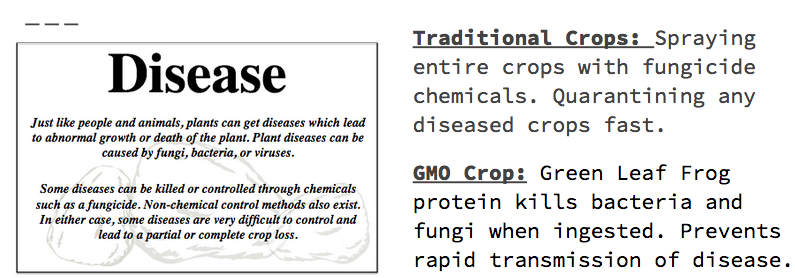
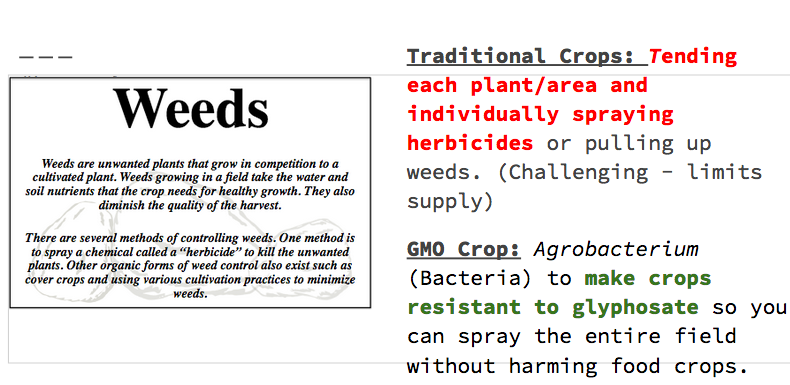
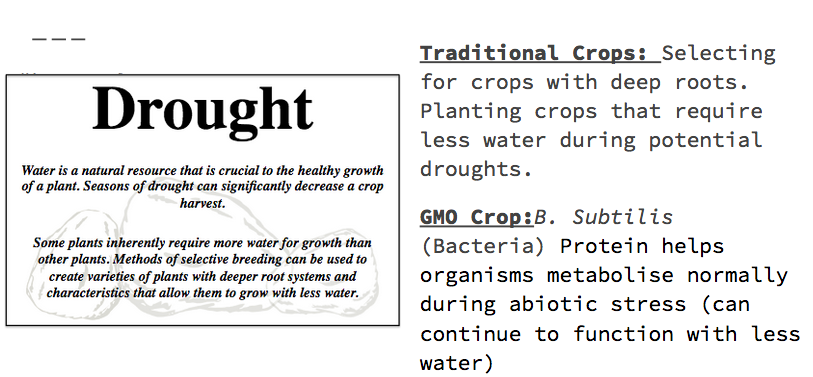
B. A Few Documented Positives:
- Scientific Studies show that GMOs have no additional risk or effects on health compared to Non-GMO crops.
- Extreme focus on testing and safety – It takes many years for a new GM crop to be developed, tested, and finally approved for commercial release.
- If deemed a risk, unsafe, or not beneficial (“fish tomato”) it does not reach the market.

- Can meet supply demands easier. Many issues and challenges can be hard to navigate with traditional crops. GMOs allow us to quickly “genetically select” for the traits we want to get through artificial selection. Makes crops less likely to be lost and keep supply high.
-
- With changing environment, many crops cannot adapt quick enough. For the future, these can make sure food stays available.
- Lower impact on environment.
- Use less dangerous chemicals that are harmful for the environment. If the plant can make its own herbicide that has no effect on humans, we do not need to spray chemicals on our foods.
- Less chemical run off into the environment
C. A Few Risks and Concerns:
1. Patents. Companies that develop the GMO can “own” it and monopolize them. Example: Monsanto and herbicide resistant corn. Monsanto sells the the herbicide and the corn resistant to it. Farmers have to buy from them!
- Seeds have “terminator” genes that do not allow them to be harvested and replanted each year. Farmers must buy new seeds each year from Monsanto.
- If a Monsanto corn plant ends up on your land, it could be considered “theft.” People have been sued for this.
- Cross Pollination: Potential for GMO and Non-GMO plants to cross pollinate leading to hybrids. No more Non-GMO options/terminator genes passed on
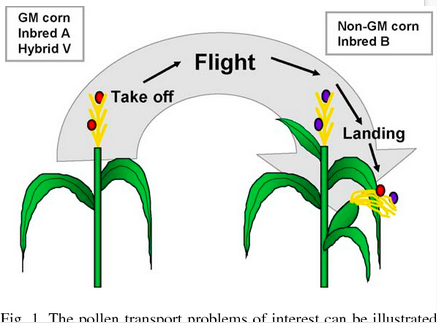
2. GMO Labels
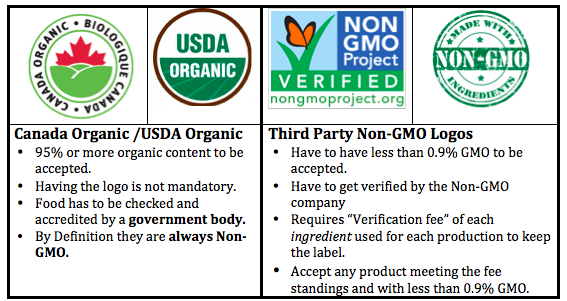
Food Ingredient Cards:
Activity 1: Use your list of accepted GMOs and go through the products, ingredients list, and labels and separate the pictures into two piles – Foods with NO GMOs and Foods that COULD have GMOs
Examples: 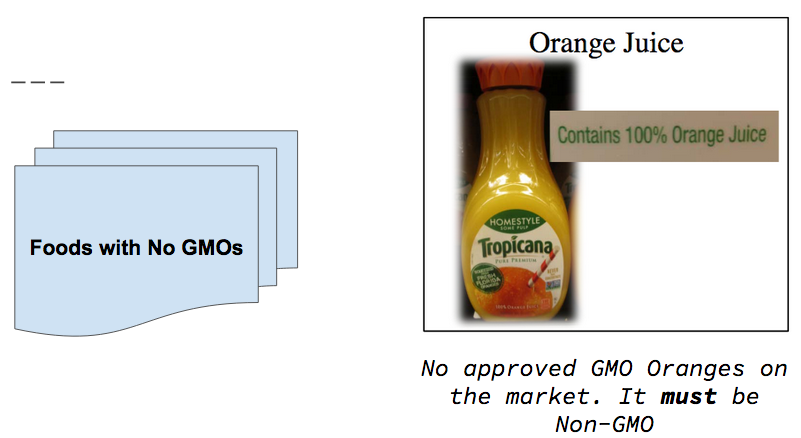

Answers:
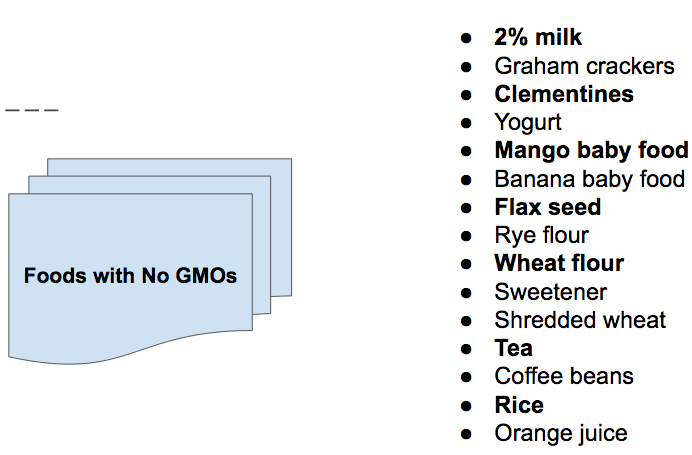
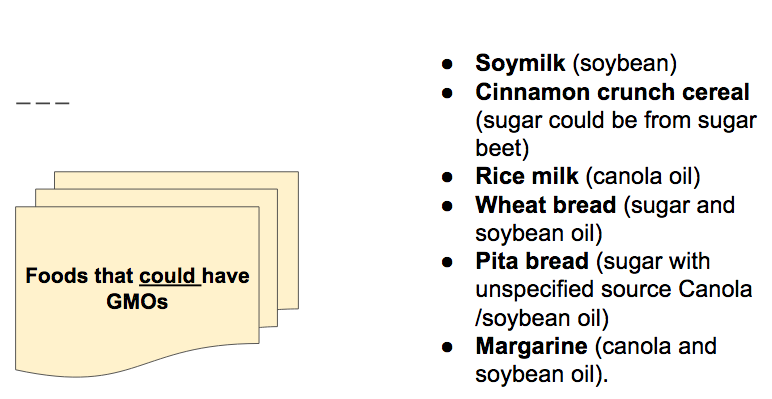
Activity 2: Separate the products into two piles – True Non-GMO Labelling or Misleading Non-GMO Labeling
Examples:
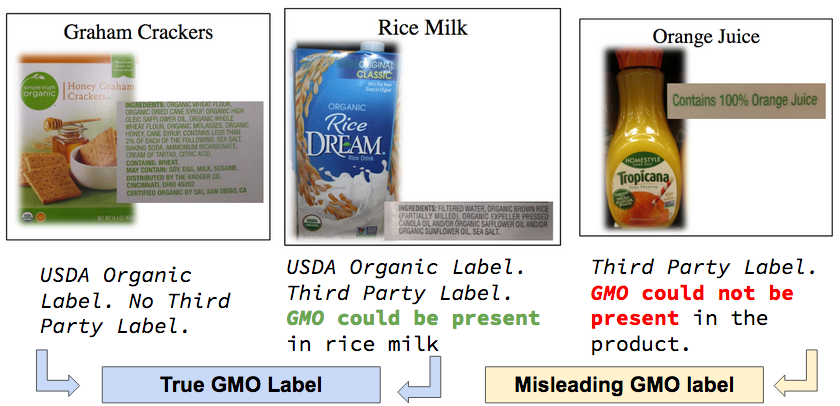
Answers:
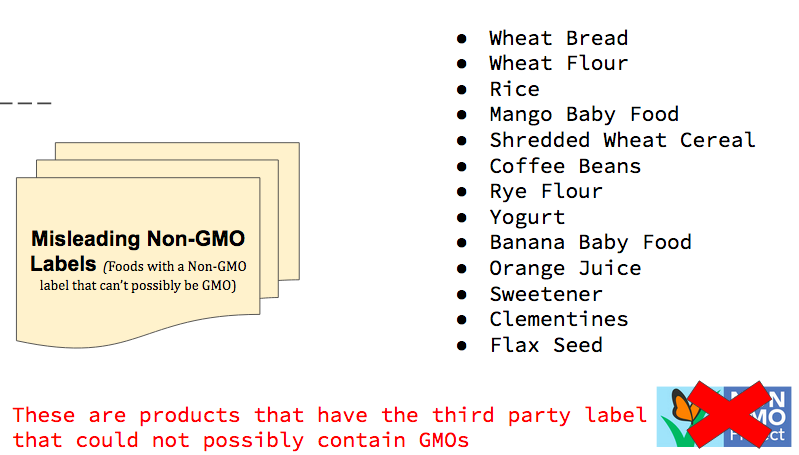
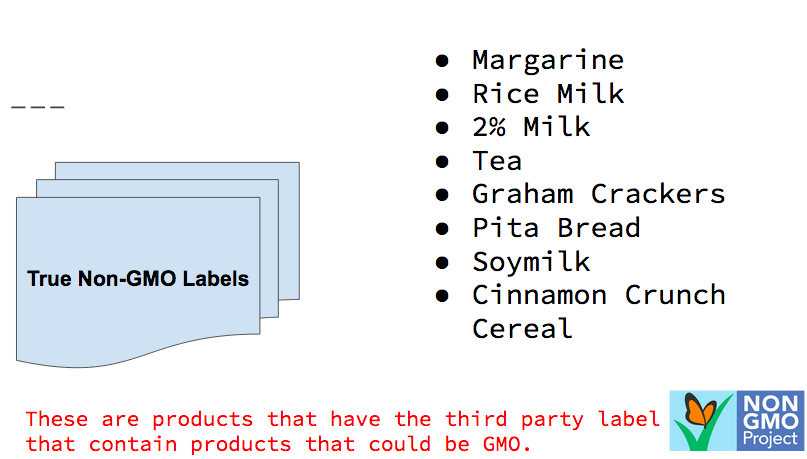
Photos from GMO Market Scavenger Hunt (All products cannot contain GMOs):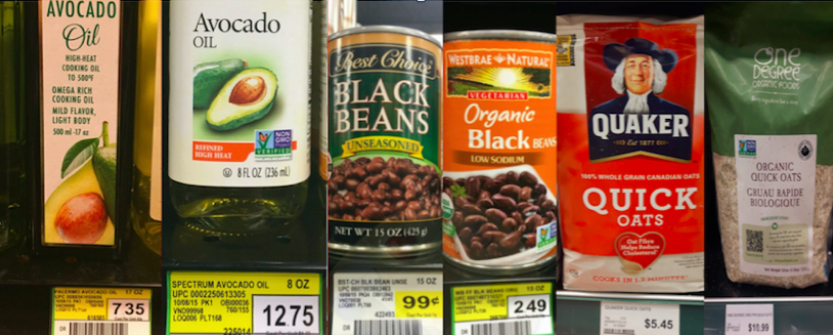
Reflect:
- Is there anything wrong with the Non-GMO project providing a clear Non-GMO label?
- What are the positives of the Non-GMO project?
- What are the negatives of the Non-GMO project?
Comments by shaun pletsch